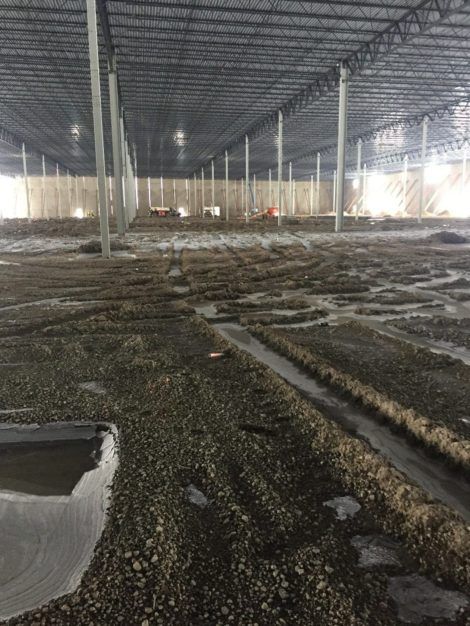InSite Real Estate Industrial Warehouse, Romulus, MI
The InSite Real Estate Industrial Warehouse project consists of a 500,000 SF modern warehouse facility, truck docks, trailer storage and employee parking on approximately 56 acres in Romulus, Wayne County, MI. The site is located on the west side of I-275 and north of Pennsylvania Avenue. The project required an extremely aggressive schedule to meet the tenants’ delivery deadline. The project kicked off with surveying services in mid-March 2016 and the final construction permits were obtained in September 2016. The project had a delivery deadline to the tenant at the end of July 2017.
The project required a collaborative effort between the Wetland Consultant, Traffic Consultant, PEA Brighton Office and PEA Troy Office to meet this deadline. The project had many obstacles to overcome which included wetland permitting, off site road improvements, a County drain crossing and dealing with an extremely flat former agricultural site and shallow storm water outlet. Working around the flat site constraints, shallow storm outlet and wetlands, PEA designed a storm water detention system that included bio-swales, a storm water forebay/detention pond and a pumped storm water outlet to meet the requirements of Wayne County. However, the greatest challenge was during construction.
In order to meet the extremely aggressive project delivery date, non-traditional solutions were needed to keep the project on-track. With site work starting in the fall, main building construction and enclosure had to be completed during the winter. The project required a floor flatness specification for the new user. As such, a stable subgrade and floor base were essential. When the building was enclosed in January, the ground was frozen, and the floor slab was to be installed on non-frozen ground.
The building was heated and the frozen ground began to thaw which created a subgrade that was extremely wet, and unstable. With cold winter conditions and enclosed building, it was evident the soil was not going to dry out with aeration. To solve this problem, PEA recommended performing soil stabilization to modify the wet subgrade soils. This solution consisted of sampling and testing on-site soils, developing a stabilization mix design, and meticulously monitoring the stabilization process. Within seven days, the floor subgrade was stabilized and ready for floor slab construction. If traditional remove and replace was performed, this would have taken about 30 days and cost almost twice as much. The stabilization was completed under budget and kept the project schedule on-track.
To learn more about PEA’s geotechnical engineering capabilities, please contact Daniel Stys, PE, Director of Marketing and Business Development.


